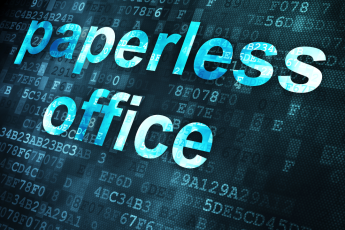In the digital age, data is the lifeblood of businesses and organizations. But what happens when disaster strikes? Natural calamities, fires, floods, or even a simple mishap can lead to the loss of critical documents and information. This is where document scanning for disaster preparedness becomes your knight in shining armor. In this article, we will explore the significance of document scanning in safeguarding your data against unforeseen disasters.
The Vulnerability of Physical Documents
Physical documents, whether they are contracts, legal records, financial statements, or historical archives, are at risk in the face of disasters. Water damage can turn vital paperwork into illegible mush, and fire can reduce them to ashes. Furthermore, searching for specific documents in piles of paperwork during a crisis is a nightmare. This vulnerability underscores the importance of having a disaster preparedness plan, and at its core, is the digitization of your documents.
Document Scanning: Your Disaster Preparedness Hero
Document scanning is a powerful tool in disaster preparedness. It involves the conversion of physical documents into digital formats, such as PDFs or image files. This process not only reduces the physical space needed for storage but also ensures the security and accessibility of your data during and after a disaster. Here’s why document scanning is your trusted hero in disaster preparedness:

1. Data Preservation
By scanning your documents, you create digital backups that are immune to physical damage. These digital copies can be stored securely on-site or in the cloud, safeguarding your data from harm.
2. Quick Access
When disaster strikes, you need rapid access to vital documents. Digitized files are easily searchable, ensuring that you can retrieve the information you need within seconds, even in the midst of chaos.
3. Reduced Business Downtime
Disasters can result in business downtime, which translates to financial losses. Document scanning minimizes downtime by allowing you to continue operations using your digital data, even if your physical documents are destroyed.
4. Cost-Efficiency
Scanning documents is a cost-effective solution. It eliminates the need for physical storage space, reduces the risk of document loss, and streamlines document retrieval, ultimately saving your organization time and money.
Implementing Document Scanning for Disaster Preparedness
So, how do you go about implementing document scanning for disaster preparedness? It’s a straightforward process:
- Assessment: Begin by identifying which documents are critical for your business or organization’s operations. These are the documents you’ll prioritize for scanning.
- Scanning: Enlist the services of a professional document scanning provider. They will use high-quality scanning equipment to create digital copies of your documents. The scanned files can be organized according to your preference.
- Backup and Storage: Ensure that digital copies are securely backed up. Many businesses choose to store them in the cloud or on remote servers. This redundancy adds an extra layer of security to your data.
- Access Control: Implement access control measures to safeguard your digital data. Password protection and encryption are common methods to prevent unauthorized access.
Conclusion
Document scanning for disaster preparedness is not just a smart strategy; it’s a necessity in today’s unpredictable world. By converting your physical documents into digital formats, you fortify your data against the unexpected. Quick access, reduced downtime, and cost-efficiency are just a few of the benefits. Don’t wait until disaster strikes; take proactive steps to secure your critical data through document scanning.
FAQs About Document Scanning for Disaster Preparedness
1. What types of documents should I prioritize for scanning in my disaster preparedness plan?
You should prioritize documents that are essential for your business or organization’s operations, including legal records, financial statements, contracts, and any documents critical to your core functions.
2. How can I ensure the security of my digitized documents in the event of a disaster?
Implement access control measures such as password protection and encryption for your digitized documents. Additionally, store backups in secure locations, such as the cloud or remote servers.
3. What is the cost of document scanning for disaster preparedness?
The cost can vary depending on the volume of documents, scanning service provider, and specific requirements. However, document scanning is generally a cost-effective solution that saves money in the long run.
4. Can I access my digitized documents remotely during a disaster?
Yes, one of the benefits of digitized documents is their accessibility from any location with an internet connection, making them invaluable during crises.
5. How frequently should I update my digitized documents for disaster preparedness?
It’s advisable to regularly update your digitized documents, particularly when you have new critical documents or when there are significant changes to existing ones.




Leave a Comment